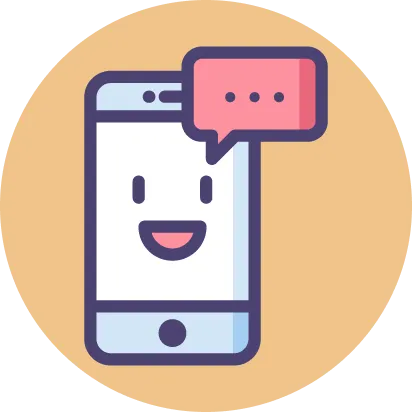Teach Your Kids Critical Thinking
Our interactive courses, worksheets, and lesson plans help kids develop the skills to communicate clearly, think logically, and make well-informed decisions.
Education Website
★★★★★— Megan, parentMy 8 year old son LOVED [Fallacy Detectors] part 1 and had so much fun doing the quizzes! I also had a great time watching it and talking about it.
★★★★★— Adèle, 9I learned about different types of fallacies which help me to identify them when having a conversation. I've been able to identify LOADS of circular reasoning!
★★★★★— AnonymousThe videos are great! They're fun, engaging, and in just a few days, my son is understanding logical fallacies so much better than he was before, after like a year of lessons!
★★★★★— Nino, parent[My daughter] followed the entire Fallacy Detector Part 1 and immediately asked to do the other classes as well ... we had a very long discussion about what she learned over dinner.
★★★★★— Ben, 15Critikid is an all-around great tool for children and teens who want to develop their analytical skills.
★★★★★— Dominika, piano teacherThe reason why we are so confused in life is because we just consume and never really chew information. Critikid is a fabulous website that addresses the most important skill that anyone should have, CRITICAL THINKING.
★★★★★— Dr AmyI did this course to assess critical thinking content for kids, as I feel it is sorely lacking generally in school curricular and may be one of the reasons for...
★★★★★— KironI am a university teacher and I am trained in statistics...and my score was not perfect :)
I loved the course, learned from it, and am recommending it to...
★★★★★— Denali, 14What a fun way to learn statistics!
★★★★★— KrzyftoszIt was a cool little text adventure game. Perhaps it would benefit from some kind of branching in the story that would lead to dead ends or some humorous...
★★★★★— Clinton LairdI am exploring critical learning techniques for young students and am curious about the structure used.....seems consistency in delivery is...
Fallacy Detectors Part 1
Develop the skills to tackle logical fallacies through a series of 10 science-fiction videos with activities. Recommended for ages 8 and up.
A Statistical Odyssey
Learn about common mistakes in data analysis with an interactive space adventure. Recommended for ages 12 and up.
Symbolic Logic for Teens Part 1
Learn how to make sense of complicated arguments with 14 video lessons and activities. Recommended for ages 13 and up.
Emotional Intelligence
Learn to recognize, understand, and manage your emotions. Designed by child psychologist Ronald Crouch, Ph.D. Recommended for ages 5 and up.
Worksheets & Lesson Plans

Symbolic Logic Worksheets
Worksheets covering the basics of symbolic logic for children ages 12 and up.

Elementary School Worksheets and Lesson Plans
These lesson plans and worksheets teach students in grades 2-5 about superstitions, different perspectives, facts and opinions, the false dilemma fallacy, and probability.

Middle School Worksheets and Lesson Plans
These lesson plans and worksheets teach students in grades 5-8 about false memories, confirmation bias, Occam's razor, the strawman fallacy, and pareidolia.

High School Worksheets and Lesson Plans
These lesson plans and worksheets teach students in grades 8-12 about critical thinking, the appeal to nature fallacy, correlation versus causation, the placebo effect, and weasel words.

Statistical Shenanigans Worksheets and Lesson Plans
These lesson plans and worksheets teach students in grades 9 and up the statistical principles they need to analyze data rationally.
Critikid’s Story
My name is Stephanie and I'm an online science teacher and educational video creator. I started Critikid because I noticed a shortage of online critical thinking resources for children. I had been teaching children about logical fallacies and cognitive biases for a while, so I knew that not only could they understand those topics, but they loved learning about them!
I am funding this project through my savings, so a current priority is keeping costs down. My husband, who is a web developer, he designed and built this site. I am teaching online science classes to cover my living expenses, so all money made from sales will go towards funding more content. I don’t have a marketing budget at this time, so if you want to support this project, it would help immensely if you spread the word.
Critikid’s Mission
Critikid’s goal is to give children the tools they need to rationally think about and discuss controversial issues, not to tell them the conclusions they should draw. Critikid’s stance is pro-logic and anti-fallacy. Besides that, I am avoiding taking stances on the side, especially about hot political topics.
Critical thinking is particularly important for children these days. They spend a huge portion of their lives on the Internet, which abounds in polarizing opinions, logical fallacies, and misinformation. This is the battlefield that the kids of today must withstand, and critical thinking is their armor. Critikid’s goal is to help them forge it.
What is critical thinking?
Critical thinking is careful thinking. It is the process of rationally analyzing information, arguments, and even our own thought processes. It lets us distinguish between logical and flawed reasoning in order to communicate clearly, even when communicating with ourselves.
Why is critical thinking important?
Firstly, critical thinking makes us better communicators. Logical fallacies frequently find their way into conversations, and when we can’t identify them, they tend to derail discussions and make them unproductive. The ability to recognize when you or your conversational partner is committing a logical fallacy can help get the conversation back on track.
Critical thinking also makes us better decision-makers. Understanding cognitive biases means understanding our minds. When we can recognize our cognitive biases, we can get a better idea of why we make the decisions we do.
People who try to sell us products or ideas know all about logical fallacies and cognitive biases, and they know how to use them to their advantage. The ability to think critically helps us to defend ourselves against manipulation.
At what age should kids start learning critical thinking?
Children can do activities to develop their critical thinking skills even before they can talk. A toy that lights up when a button is pressed teaches cause and effect, peek-a-boo teaches object permanence, and nesting toys help develop problem-solving skills.
Once kids can talk, they can start to do simple experiments. For example, a parent might ask, “What do you think will happen when I mix the red and blue paint?” The child can make a prediction and then test it by mixing the paints. In the future, I'll post critical thinking activities for kids on this site.
Critikid will offer various levels targeting different age groups. Fallacy Detectors Part 1 is aimed at children ages 8-12. The formal logic course that I am now working on will target kids 13 and up.
I’ve been teaching critical thinking to children for years now, so I know that they are not only capable of understanding it, but they love it. What kid wouldn’t find it amusing to hear about the silly mistakes that even adults can make? Moreover, childhood is the best time to strengthen the mind’s defenses and teach it to recognize its biases. It only gets harder as you get older.
Who are you?
My name is Stephanie Simoes. I’ve been a science teacher and children’s educational video creator for many years. My background is in biology and philosophy. I’m running this project with a very small team of talented freelancers.
If you are interested in learning more about my online science classes, please email me at [email protected]
What's next

Fallacy Detectors Part 2
Coming soon! - The fallacy-busting quest continues with 10 more fallacies to defeat.

Cognitive Biases
Coming Soon - Discover the sneaky tricks your brain plays on you and become a better decision-maker.

Media Literacy
Coming Soon - Learn to navigate the online world safely and rationally.

Social Media Simulator
Coming Soon - Prepare yourself for the fallacy-filled online world.